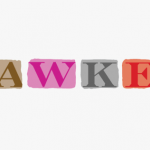How This Startup Solves Our Too-much-knowledge drawback
using lessons from quantum computing and tune, Teraki claims to cut knowledge torrents from our sensor-bedecked world by means of up to 90%.
November 20, 2015
good thermostats like Google’s Nest file the temperature and can also be controlled on-line. health bands just like the Fitbit Surge beam your steps, heart charge, and other fitness data to a smartphone and on to the cloud. Machines ranging from automobile engines to power plant turbines have sensors that measure issues like vibration and temperature to determine if they are working properly and predict if one’s headed for a breakdown.
it can be straightforward to imagine a global wherein each device is hooked up to the web of issues. Then what?
Ever-more units spewing knowledge into the cloud are going to swamp our capacity to collect and analyze the ideas, says Edouard Rozan, cofounder of Berlin-based totally startup Teraki. “The networks are going to crumple because they are not ready to handle such an amount of knowledge,” he says. “the data middle to course of the info is a huge funding . . . and numerous times we now have to take [action] in a very fast time.”
now not all connected gadgets are hooked up to quick networks, both. Low-power, extensive-space networks preserve vitality by means of hanging strict limits on information transmission. One expertise, Sigfox, may limit a sensor to transmitting 144 data packets per day. up to 5 billion units could be on such networks via 2022, in keeping with analysis firm technique analytics.
they might include sound sensors in cities, which are used to watch visitors. A network of one hundred sensors would generate about 1 terabyte of information per day, the company reckons. An offshore oil platform also spews about a terabyte every day.
Rozan says Teraki can tackle this downside with the aid of lowering knowledge flow from sensors as much as 90%. after I ask Rozan if he is talking about compression, treating something such as temperature readings like the musical notes that get squeezed into an MP3 file, he says that is now not environment friendly or fast enough. Compression requires quite a lot of computing to crunch the data for transmission, after which more to unpack it on the other finish. That’s an influence drain for sensors in fitness bands or around a city that runs on batteries, and the compression-decompression process introduces a dangerous prolong for issues like collision-warning methods in cars. “it isn’t about realtime,” says Rozan. “it is about, i’ve to suggest you 5 seconds in advance of time.”
while Teraki isn’t taking an MP3 way, the company is, in a way, treating data like track. Sensor readings are not merely streams of bits; they are sets of frequencies. If speed readings from a car’s wheels or the temperature readings from its engine didn’t exchange in any respect, there could be no point measuring them. but there is a restrict to how so much they may be able to vary prior to the car falls apart. Between the 2 extremes is a spread of frequencies. And mathematicians have long had instruments for describing complex frequencies with simpler parts.
Teraki makes use of one called frequency decomposition. within the audio realm, this course of breaks the complicated sounds in voice or music into a sum of straightforward, pure tones referred to as sinusoids. Teraki does one thing identical with “tune” of the sensors, transmitting just a quick synopsis of the completely different frequencies to a receiver that may reassemble them into the complete signal—or close sufficient. Rozan claims that final information is not going to be off by using more than about zero.2%. If a obtain of Microsoft office had been off through that so much, this system might no longer even run. but which is well throughout the margin of error for a sensor. “in case you measure this room today,” he says, gesturing around the convention room in Berlin, “and there are two sensors, they will give you two different numbers. One % difference, for sure.”
In take a look at results that Teraki has revealed, it claims to have done a 33% battery saving over the usage of conventional compression and a latency (lengthen) of 25 milliseconds, versus 580 milliseconds for handling the same knowledge with compression.
A Quantum bounce, For real
Rozan manages the trade facet of Teraki. The arithmetic comes from cofounders Markus Kopf and especially Daniel Richart. From 2008 via 2013, Richart did his PhD work at the Max Planck Institute of Quantum Optics in Munich under Nobel Prize-winning atomic physicist Theodor W. Hänsch. Richart worked on initiatives in quantum computing, an child know-how that uses the more than one that you can imagine quantum states of a particle to control all conceivable combinations of knowledge simultaneously.
“you need to manage a huge amount of knowledge,” says Rozan. “all of the photon states, they are generating a lot data, that’s why they decided to start out research on how one can reduce the quantity of knowledge to avoid this bottleneck of data.” Richart realized that this software for doing his work in Quantum mechanics generally is a industry unto itself.
it is now not just a neat concept: Teraki’s funders embrace the Technical university of Berlin and the German government. it really works out of hub:raum, an incubator run by means of Deutsche Telekom. Teraki is already enforcing its technology with a major carmaker. Rozan asked me not to repeat which one, but Teraki is based in Germany, so the options are abundant and high caliber. “we’re doing an actual implementation on a real automotive,” he says. the automobile’s sensors can generate around 250MB of data per hour, says Rozan, and Teraki reduces that to about 10MB per hour, dropping accuracy by simplest 0.01%, he claims. Rozan says that Teraki can also be “in dialog” with a big chipmaker’s IoT division.
as well as, Rozan has been speaking with an auto components producer that uses an ultrasound sensor to inspect molded plastic elements for defects. That single sensor generates about 3GB of knowledge each minute. Over a month, Rozan reckons, that would require about €6,000 ($6,525) in knowledge storage. “we are able to scale back from €6,000 to €600 the cost of the storage,” he says.
Teraki’s technology isn’t static. while the sensor facet of the operation is all about saving power, the servers on the receiving finish run artificial intelligence computer finding out algorithms to guage the effectivity of the info abbreviation and develop higher optimized strategies. (the corporate’s identify is a mix of tera, as in terabyte and KI, representing the German term for artificial intelligence, okayünstliche Intelligenz.)
Teraki’s process is all applied in tool; it’s not burned into silicon chips. So the algorithms may also be repeatedly up to date. And because the data is encoded in a technique that retains evolving, Teraki is largely encrypting the data it transmits.
For Rozan, it can be a foregone conclusion that the web of issues is most effective sensible if anyone can get a deal with on the information explosion.
“If we don’t put any intelligence at the supply of the information,” he says, “it’ll cave in the whole lot.”
fast company , learn Full Story
(20)














